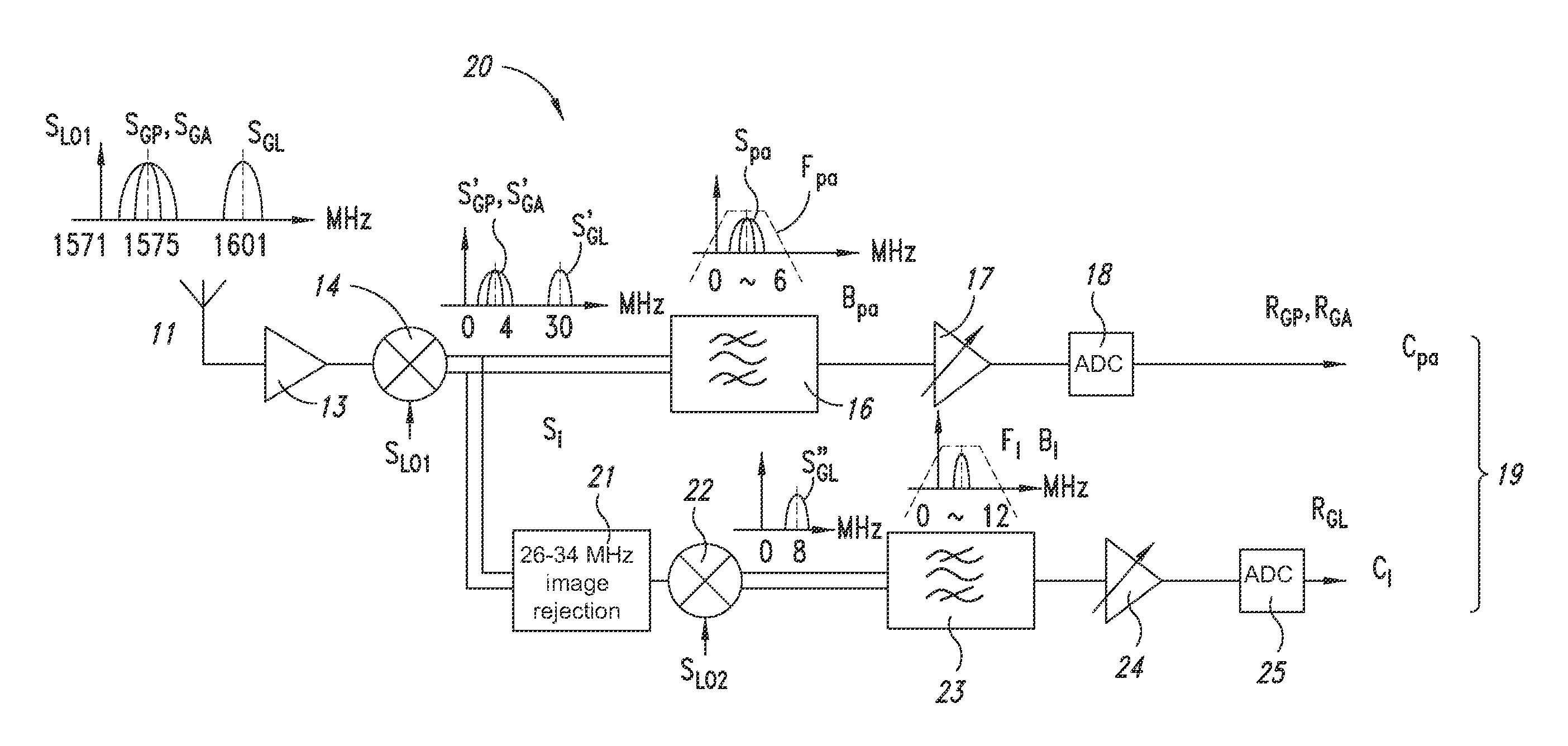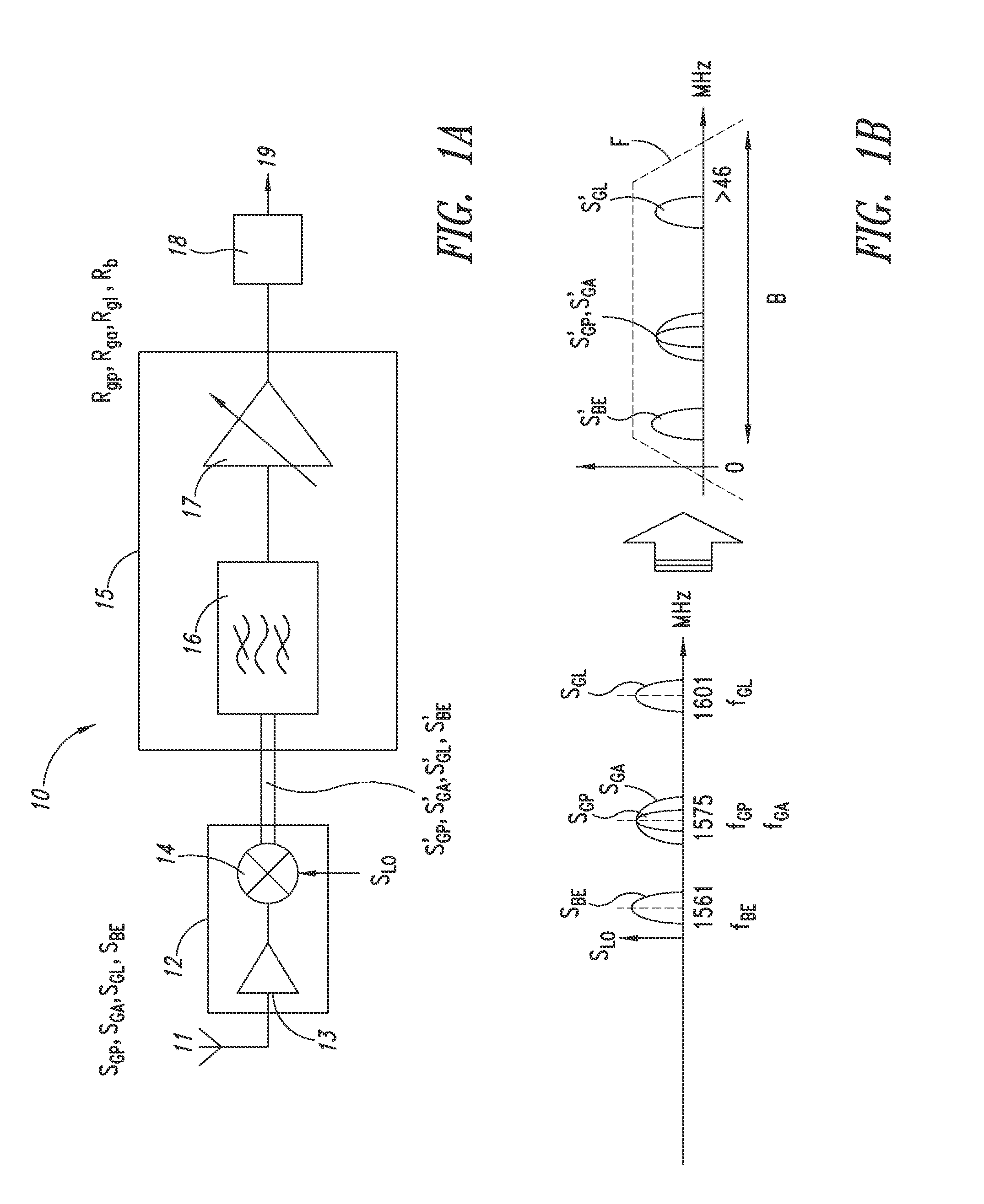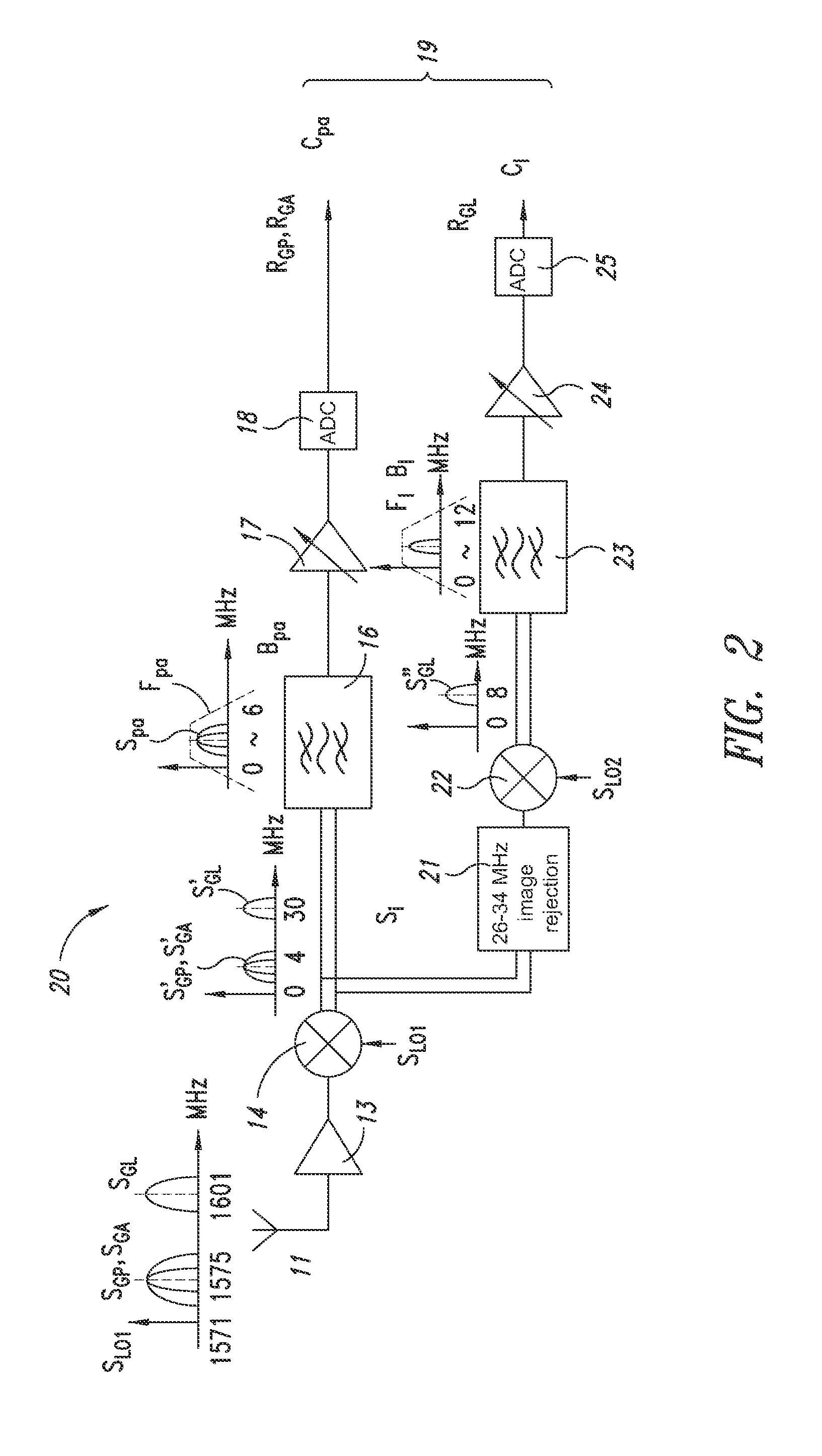Receiver for receiving a plurality of GNSS (global navigation satellite system) signals
a technology of global navigation satellite system and receiver, applied in satellite radio beaconing, measurement devices, instruments, etc., can solve the problems of high silicon area occupation, inability to achieve even results, and difficulty in concurrent reception, so as to reduce hardware components and reduce costs. , the effect of low cos
- Summary
- Abstract
- Description
- Claims
- Application Information
AI Technical Summary
Benefits of technology
Problems solved by technology
Method used
Image
Examples
Embodiment Construction
[0034]The ensuing description illustrates various specific details aimed at an in-depth understanding of the embodiments. The embodiments may be implemented without one or more of the specific details, or with other methods, components, materials, etc. In other cases, known structures, materials, or operations are not illustrated or described in detail so that various aspects of the embodiments will not be obscured.
[0035]Reference to “an embodiment” or “one embodiment” in the framework of the present description is meant to indicate that a particular configuration, structure, or characteristic described in relation to the embodiment is comprised in at least one embodiment. Likewise, phrases such as “in an embodiment” or “in one embodiment” that may be present in various points of the present description do not necessarily refer to the one and the same embodiment. Furthermore, particular conformations, structures, or characteristics can be combined appropriately in one or more embodi...
PUM
 Login to View More
Login to View More Abstract
Description
Claims
Application Information
 Login to View More
Login to View More - R&D
- Intellectual Property
- Life Sciences
- Materials
- Tech Scout
- Unparalleled Data Quality
- Higher Quality Content
- 60% Fewer Hallucinations
Browse by: Latest US Patents, China's latest patents, Technical Efficacy Thesaurus, Application Domain, Technology Topic, Popular Technical Reports.
© 2025 PatSnap. All rights reserved.Legal|Privacy policy|Modern Slavery Act Transparency Statement|Sitemap|About US| Contact US: help@patsnap.com



